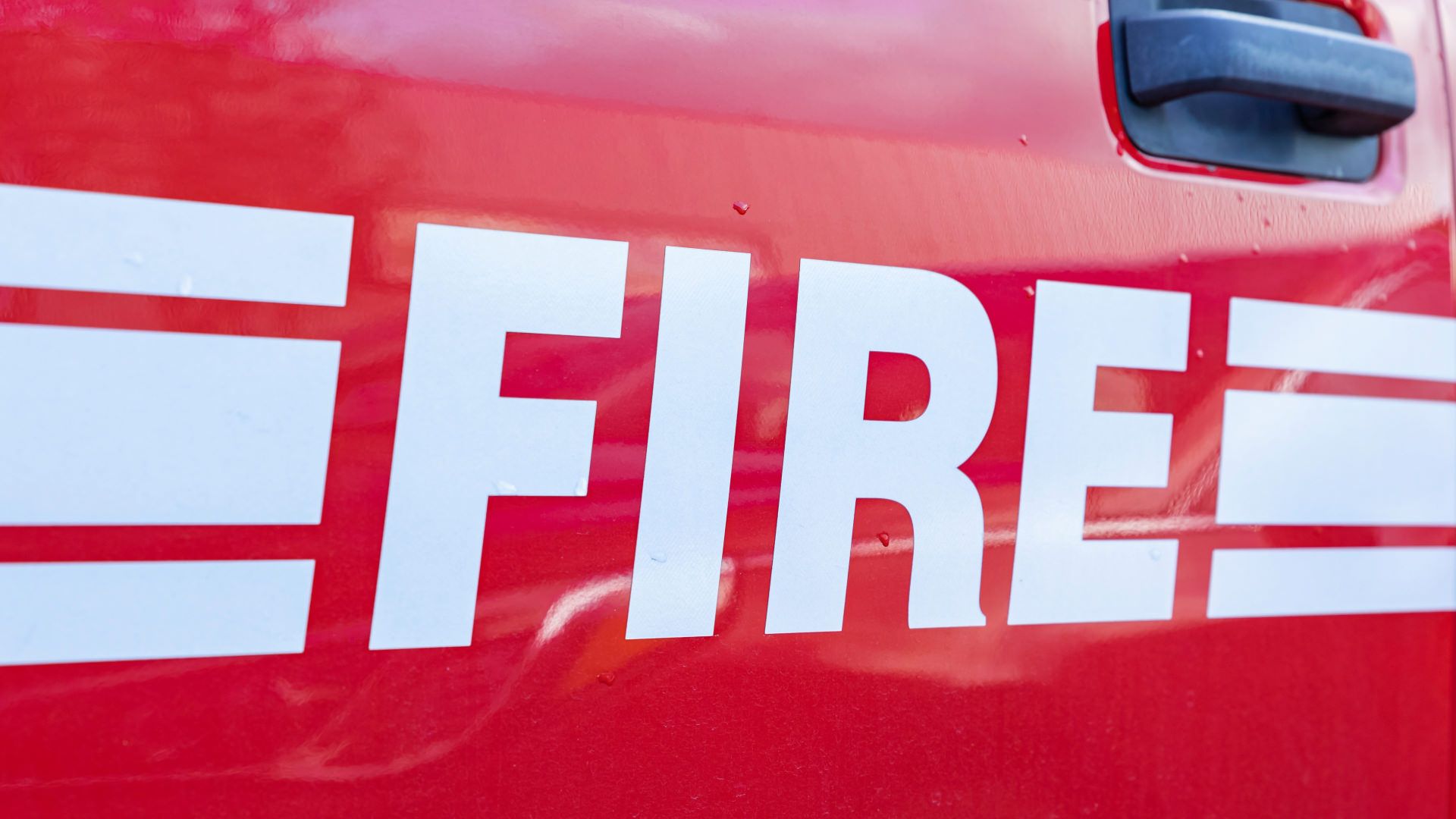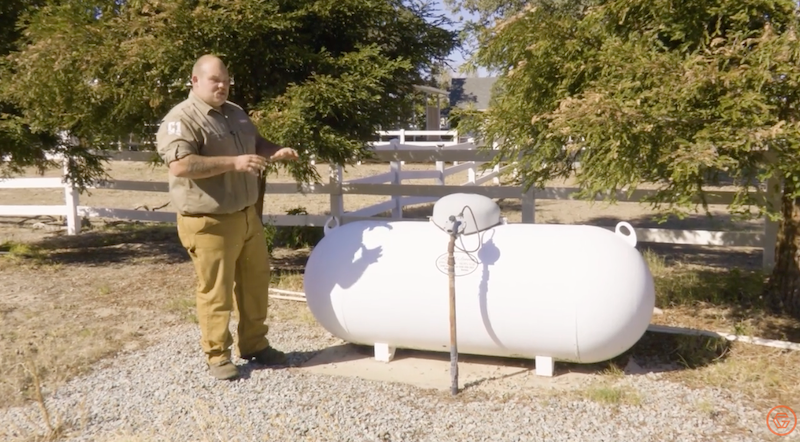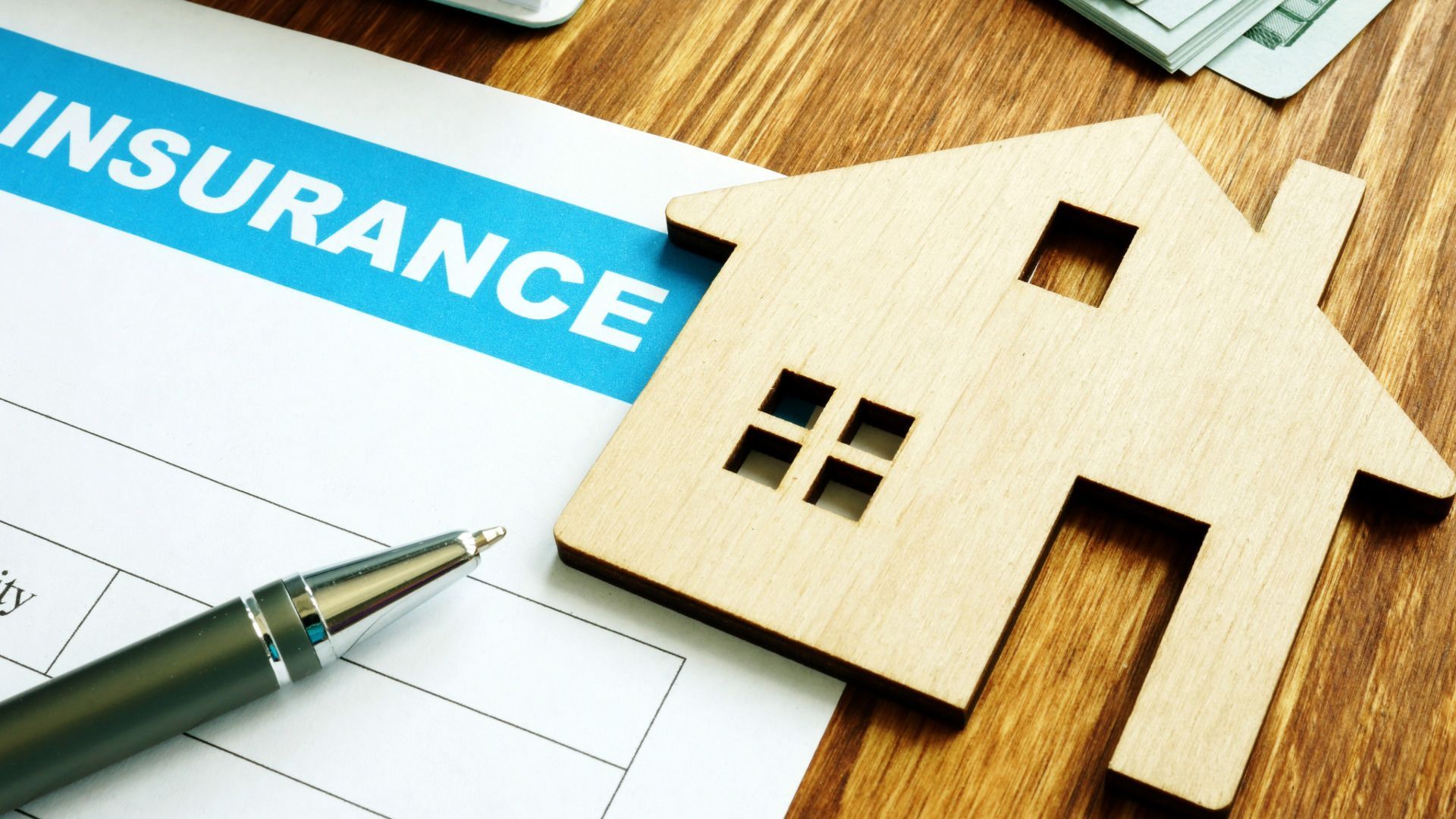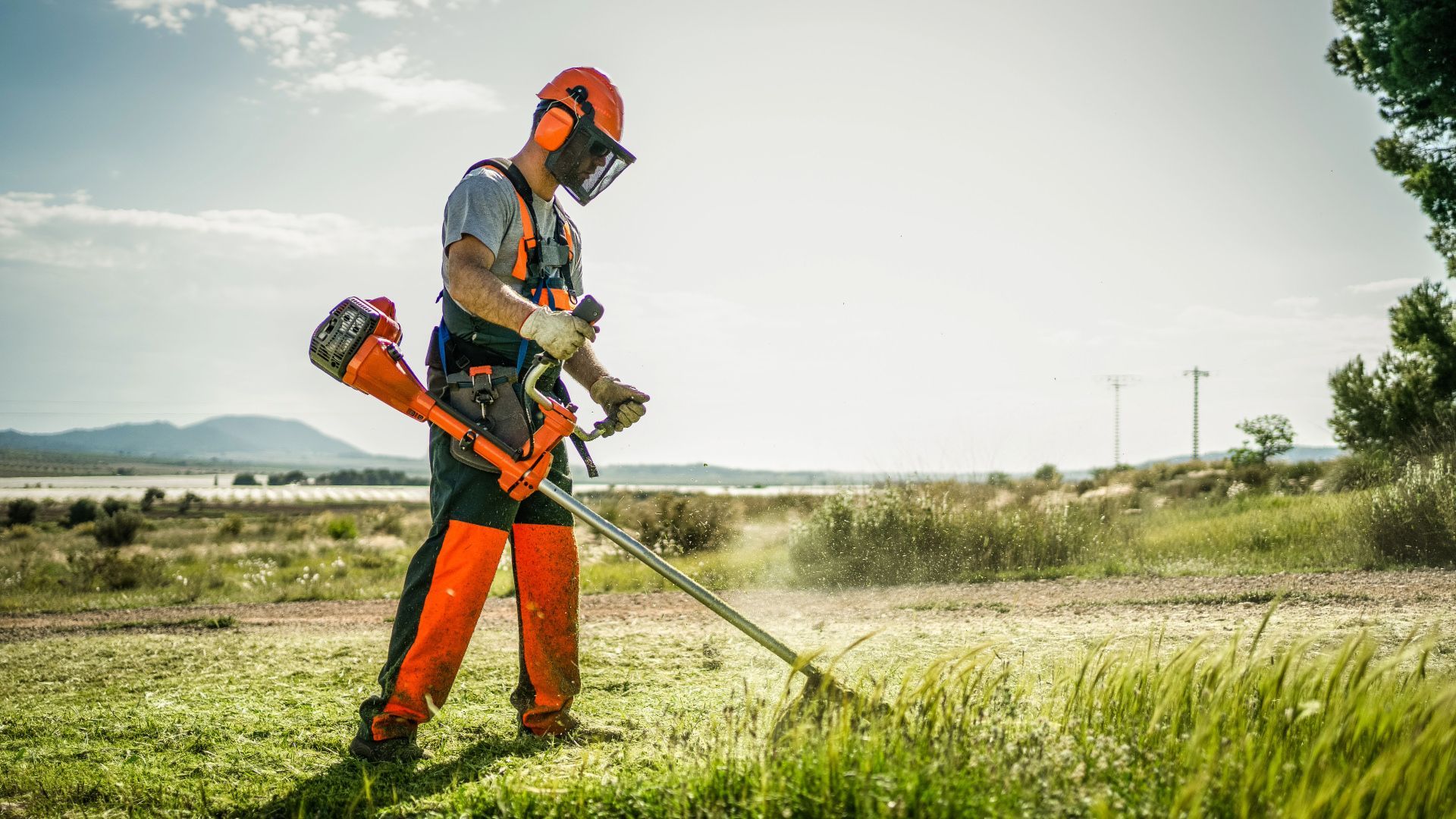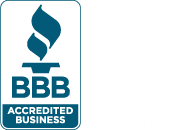The Best Time for Burn Piles & How To Do It Safely
Let’s break down why debris cleanup matters, how to properly build and burn a pile, and what regulations you need to follow—whether you’re in a State Responsibility Area (SRA) or a Local Responsibility Area (LRA).
Why Cleaning Up Debris Matters
Dead and fallen vegetation is fuel for wildfires. The more debris left to pile up on your property, the greater the risk when fire season rolls around. Even a small ember from a nearby fire can ignite an overgrown yard; putting homes, businesses, and entire communities in danger.
By taking advantage of winter’s safer conditions, you can eliminate excess fuel loads before they become a problem. This is especially important for properties in high-fire-risk zones, where defensible space is not just recommended—it’s required.
How to Build and Burn a Safe Debris Pile
To ensure a safe and controlled burn, follow these CAL FIRE and U.S. Forest Service guidelines:
Building Your Burn Pile
✅ Size It Right: Piles should be no larger than 4 feet in diameter and 4 feet high. Smaller piles are easier to manage and control.
✅ Choose a Safe Location: Your burn pile should be at least 10 feet away from flammable vegetation and 100 feet away from any structures. Avoid placing piles near overhanging branches or power lines.
✅ Use Only Natural Materials: Burn only dry, natural vegetation from your property—no trash, treated wood, plastic, or other prohibited materials.
✅ Cover and Protect: If rain is in the forecast, cover your pile with a tarp or burn pile paper. This keeps it dry and ensures it burns efficiently when the time comes.
Burning Your Pile Safely
🧯
Check the Weather: Never burn on windy days or when Red Flag Warnings are in effect. High winds can cause flames to spread unpredictably.
🧯 Clear the Area: Create a 10-foot-wide clearing around the pile, free of grass, brush, and other flammable materials.
🧯 Have Tools Ready: Keep a shovel, water source, and fire extinguisher on hand in case the fire needs to be put out quickly.
🧯 Stay With Your Fire: Never leave a burn pile unattended! Stay with it until it’s completely out—meaning no heat, no smoke, and no embers.
Fire Behavior & Flame Heights – Know What to Expect
🔥 A standard 4-foot-tall burn pile can produce flames that reach 8 to 12 feet in height. If there’s any wind, the flames can lean even higher, making it essential to clear a wide perimeter around the pile.
🔥 Example 1: If a gust of wind kicks up, a burn pile with flames already reaching 10 feet high could easily extend flames to 15 feet or more, especially if the pile is loosely stacked with dry materials.
🔥 Example 2: Piles with green vegetation (like fresh branches and leaves) will burn slower but can still produce unpredictable flame heights. Even a slow-burning pile can suddenly flare up if wind or embers reach dry fuels nearby.
🔥 Example 3: If burning on a slope, flames can travel uphill at five times the speed compared to flat ground. This is why CAL FIRE recommends burning on level terrain whenever possible.
Knowing how fire behaves helps you stay ahead of potential dangers. Always plan for flames to be taller than your pile and keep the surrounding area clear.
Understanding California’s Burning Regulations
Not all areas in California have the same burn regulations, so it’s important to know where your property falls:
State Responsibility Area (SRA) vs. Local Responsibility Area (LRA)
- SRA (State Responsibility Area): These are typically rural and wildland areas where CAL FIRE is responsible for fire suppression and prevention. If your property is in an SRA, you must apply for a CAL FIRE burn permit.
- LRA (Local Responsibility Area): These areas include cities, suburbs, and developed communities where local fire departments handle fire regulations. If you’re in an LRA, you’ll need to contact your local fire department for burn permit requirements.
Don’t know which area you’re in? Check CAL FIRE’s SRA Viewer here to find out.
Burn Permits & Burn Season
🗓️ Burn Season: In most areas, burn season runs from November through April, but it varies by location. Each county sets its own burn and no-burn days.
👩🏽🚒 Permits Required: If you live in an SRA, you need a CAL FIRE burn permit (apply online). If you live in an LRA, contact your local fire department for permit details.
📞 Call Before You Burn: Even if you have a permit, you must check if it’s a permissive burn day before lighting up.
Checking Air Quality & Burn Day Status
Air quality regulations exist to prevent unnecessary pollution and protect public health. Before burning, you must ensure it’s a designated burn day by checking with the California Air Resources Board (CARB) or your local Air Pollution Control District.
Air Quality Resources
📞 California Air Resources Board (CARB): (800) 242-4450
💨
National
Real-Time Air Quality & Burn Day Status: https://www.airnow.gov
Final Safety Tips
✅ Burn Early in the Day: Mornings have cooler temps and lower winds, making for safer burns.
✅ Notify Neighbors & Fire Officials: Let them know you’re burning so they don’t report it as an uncontrolled fire.
✅ Completely Extinguish the Fire: Douse with water, stir the ashes, and repeat until the pile is completely out.
You May Reprint or SHARE THIS ARTICLE
Keep your neighbors and friends up-to-date on fire safety by sharing this article with them now. You may reprint and share this information on your website, social media, or newsletter. Please include a link back to Grind Fire Defense as the original author.
Grind Fire Defense Is here to help
Call (530) 999-2035 to talk to a California Fire Defense Expert about protecting your property.
We offer free estimates and a 5-Star Service Guarantee on all our fire defense services.
Learn how to protect your property, no matter where you live.
Get the
Grind Fire Defense Workbook for Homeowners with dozens of quick video lessons.
Fire Captain, John Gleason, will teach you...
- How to create a fire safety & evacuation plan for your family & pets
- What's unique about your landscape and how wildfire behaves in your area
- How firefighters will gage if they can protect your home when fire approaches
- Fire safe landscaping tips for the areas closets and furthest from your home
- Seasonal check-points to prepare your property for wildfire year-round
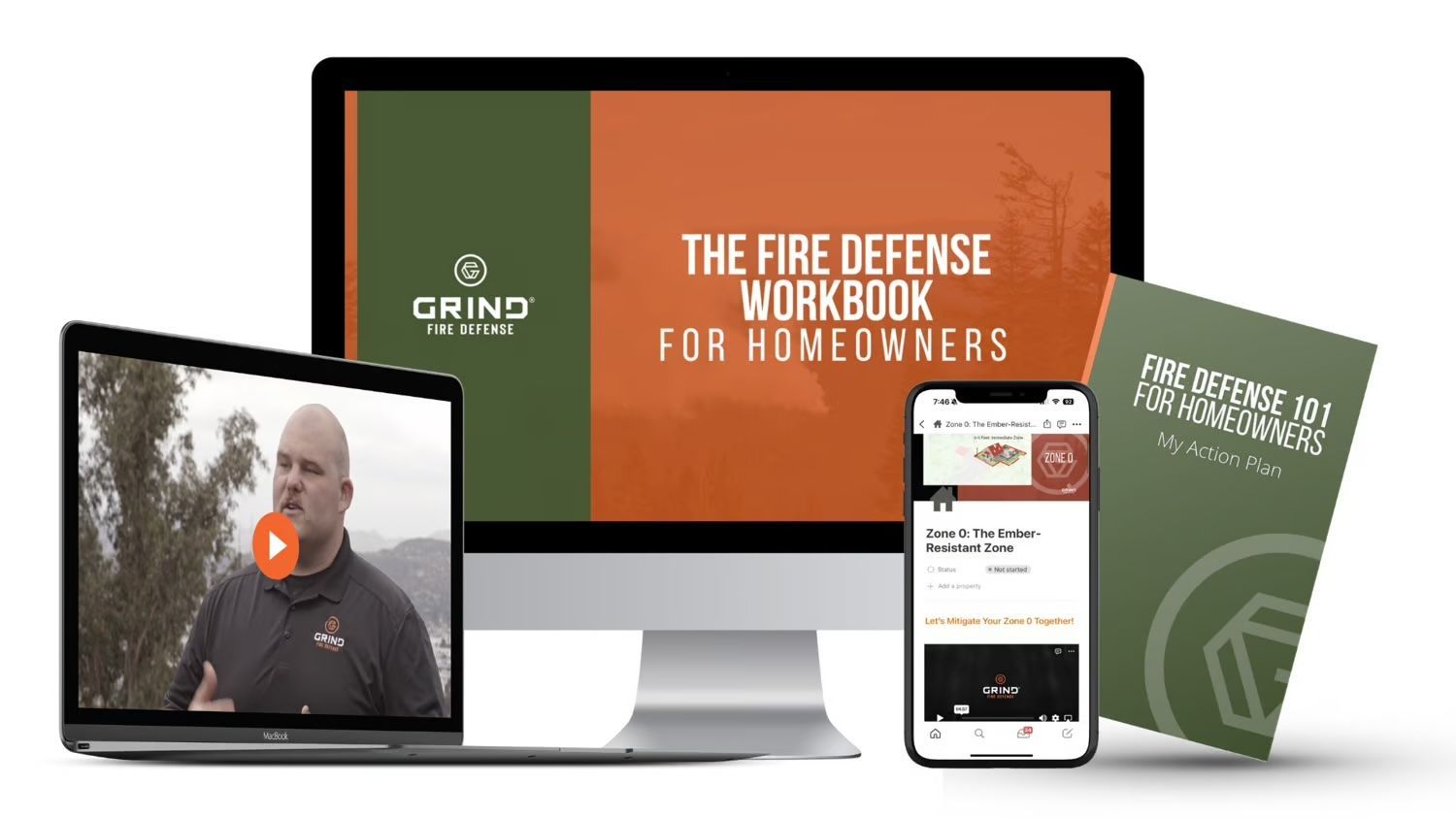
Share this article on
